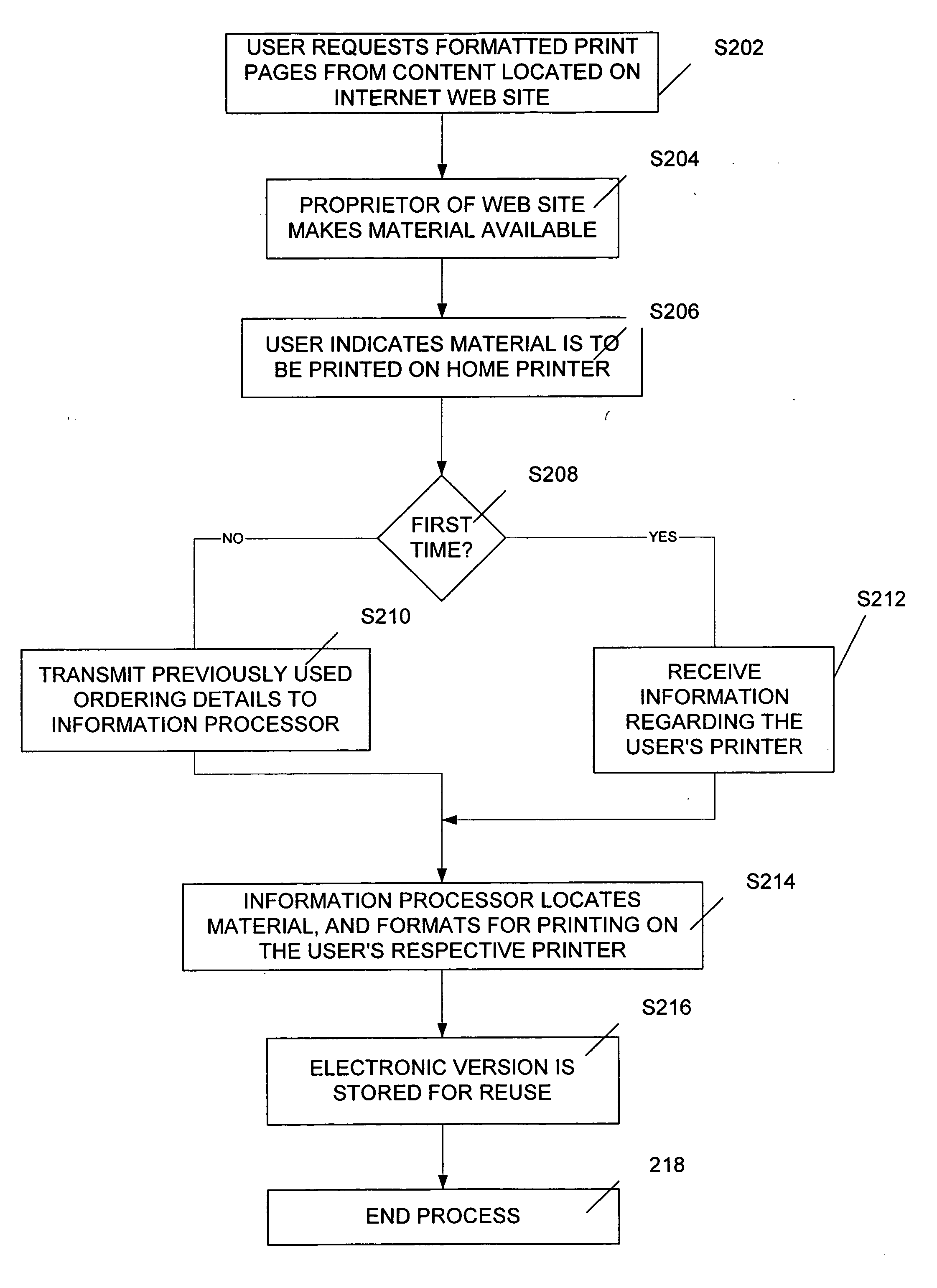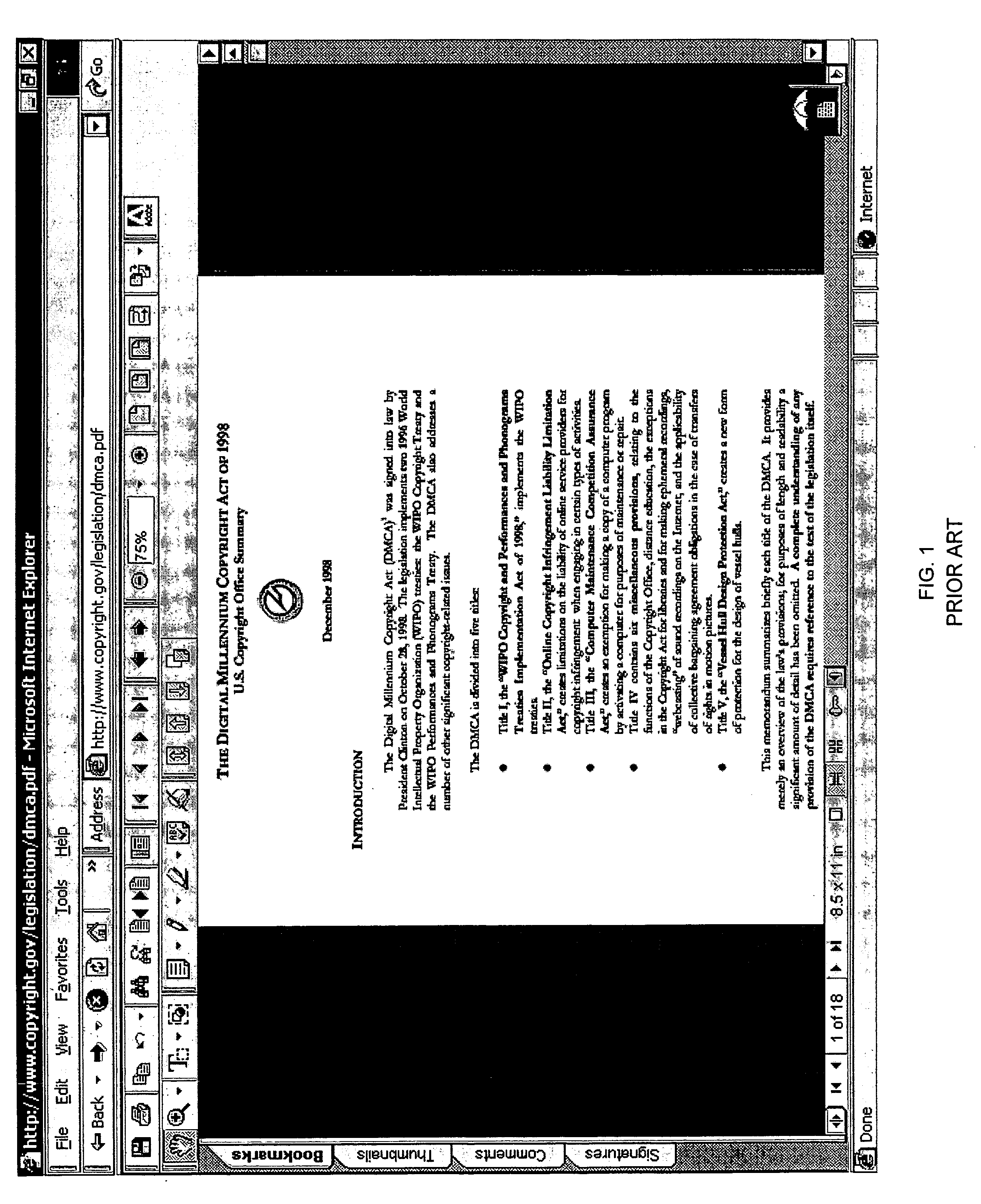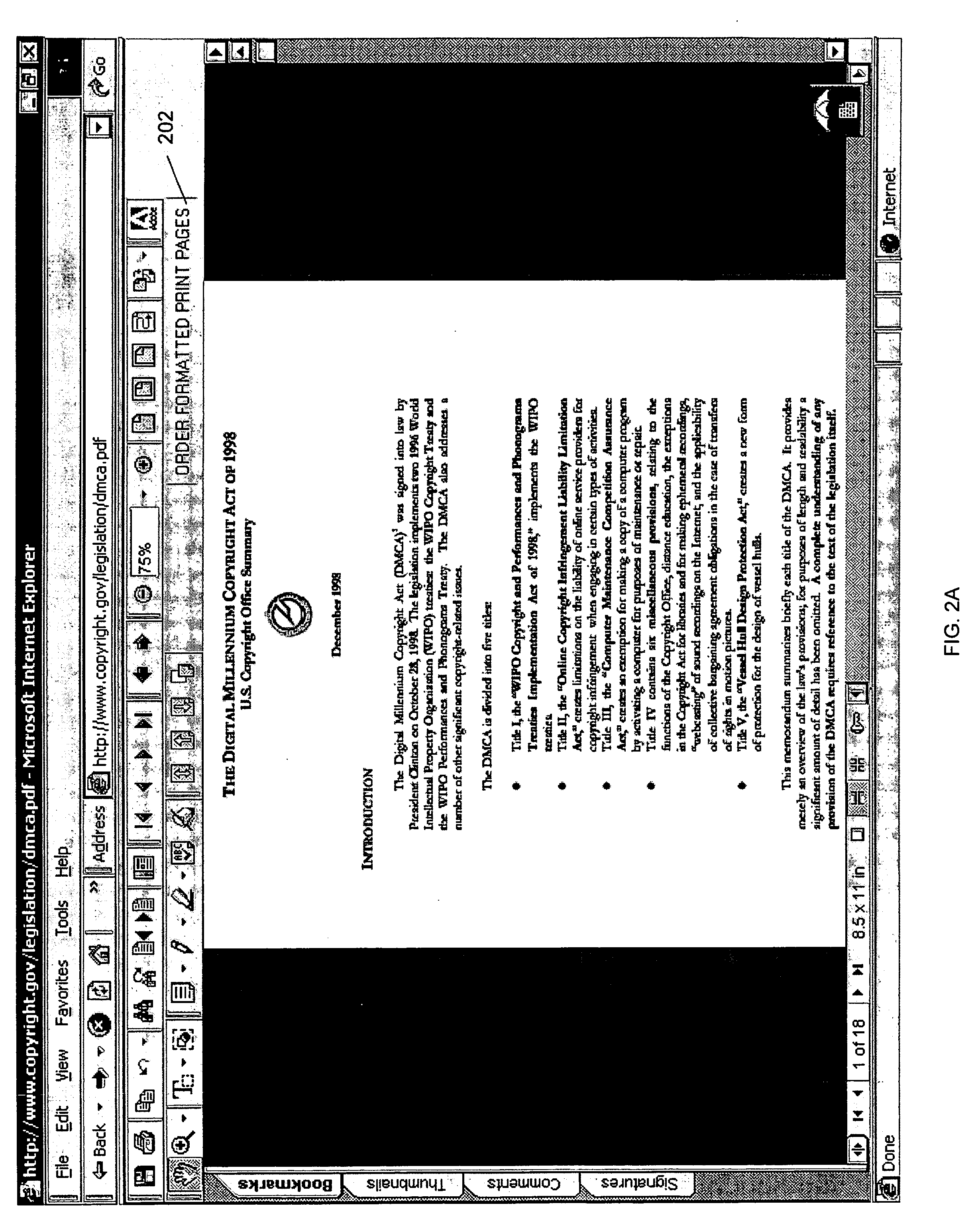Unfortunately, printing virtual documents, especially those that comprise art,
graphics or photography, for example, on a home printer usually yields unsatisfactory results for various reasons.
For example, and as described in pending U.S.
patent application Ser. No. 10 / 671,194, many printing devices do not accommodate double-sided printing.
Although some printing devices have double-sided capability, users often forget or do not know how to set their printing devices to take
advantage thereof.
Further, some printing devices, for example, many kinds of
laser printers, do not print in color.
Also, optimal results for art,
graphics and photography are only achieved by using special and typically expensive paper.
Moreover, most photo-quality paper is not distributed having a double-sided capacity.
Also, even if a user has the appropriate device, paper, and skills to format and print virtual documents such that they are well laid-out on both sides of a set of pages of appropriate quality, the print jobs are typically output on unbound single sheets of paper and are also, therefore, unsatisfactory.
Even typical home printers that are capable of printing on both sides of double-sized paper (and therefore would theoretically permit the user to create a conventional bound, printed document) do not include any capabilities for folding the pages or binding at the fold, so make the creation of such finished documents impractical if not impossible for home users.
Thus, even though a typical prior art virtual document (e.g., a PDF file) may appear to be formatted to closely resemble an original file and / or formatted print pages, a printed copy of the virtual document typically suffers from various defects, such as described above and in pending U.S. patent application Ser. No. 10 / 671,194.
These were not commercially successful, however, and most (if not all) have disappeared from the marketplace.
Notwithstanding this apparent benefit, printed output of e-docs suffer from many of the defects and deficiencies described above, and most people do not find them as convenient and desirable as conventionally printed and bound documents.
E-books do not account for such traditional
layout requirements.
Also, because e-doc readers provide a variety of means for accessing sections within a document, such sections, perhaps including the table of contents, may be in an inappropriate location, and that page or those pages may have to be moved.
Another shortcoming associated with printing e-docs is that the number of pages may not be appropriate.
Another issue with respect to printing e-books is that the e-doc may be designed for a reader of a size inappropriate for a physically printed page.
Another problem associated with printing e-docs is that pages that refer to online facilities or that include help descriptions embedded in the text of the e-docs are printed.
This is typically undesirable because such pages contain content that is particular to the electronic version of the document.
Moreover, the type size of a e-doc may not be fixed (that is, may be under the control of the user of the e-doc viewer), so that the
layout of the e-doc, when printed, is not fixed.
However, because there is often no physically printed version of the e-doc and no such printed version is anticipated, this preparation is typically not done for e-docs, and no electronic version of the e-doc suitable for bound, double-sided printing exists.
Therefore, there is no convenient way for an on-demand printed version of an e-doc to be offered.
Unfortunately,
software applications that are often provided with color printers, for example, ink jet printers, do not accurately convert RGB format to CMYK.
Furthermore, in the case that the
electronic content has any graphic images such as photographs, artwork, diagrams, and the like, those graphic images are typically at a resolution suitable for display on a computer screen (typically 70 to 72
dots per inch) and not suitable for printing (which typically requires a minimum of about 150
dots per inch for satisfactory results).
Moreover, a virtual document may make use of fonts (and / or typefaces) that are available on a particular computer
system, but may not be part of the virtual document at all.
Without the appropriate treatment of the fonts (typefaces), the document may not print properly.
In the prior art, the ability to offer bound, printed versions of material on an Internet
web site, as well as material provided in other locations / ways, is not made readily available.
Unfortunately, providing such on-demand print-ready versions is cost-prohibitive.
However, although such printing companies may have taken steps to make their capabilities known to potential users, the establishment of a relationship between web sites and printing companies is not made because each job must be estimated and bid separately, and the communication of the individual orders from the
web site to the printing company has not been conveniently established.
Thus, the relationship between web sites and printing companies is not straightforward and / or established.
 Login to View More
Login to View More  Login to View More
Login to View More 


